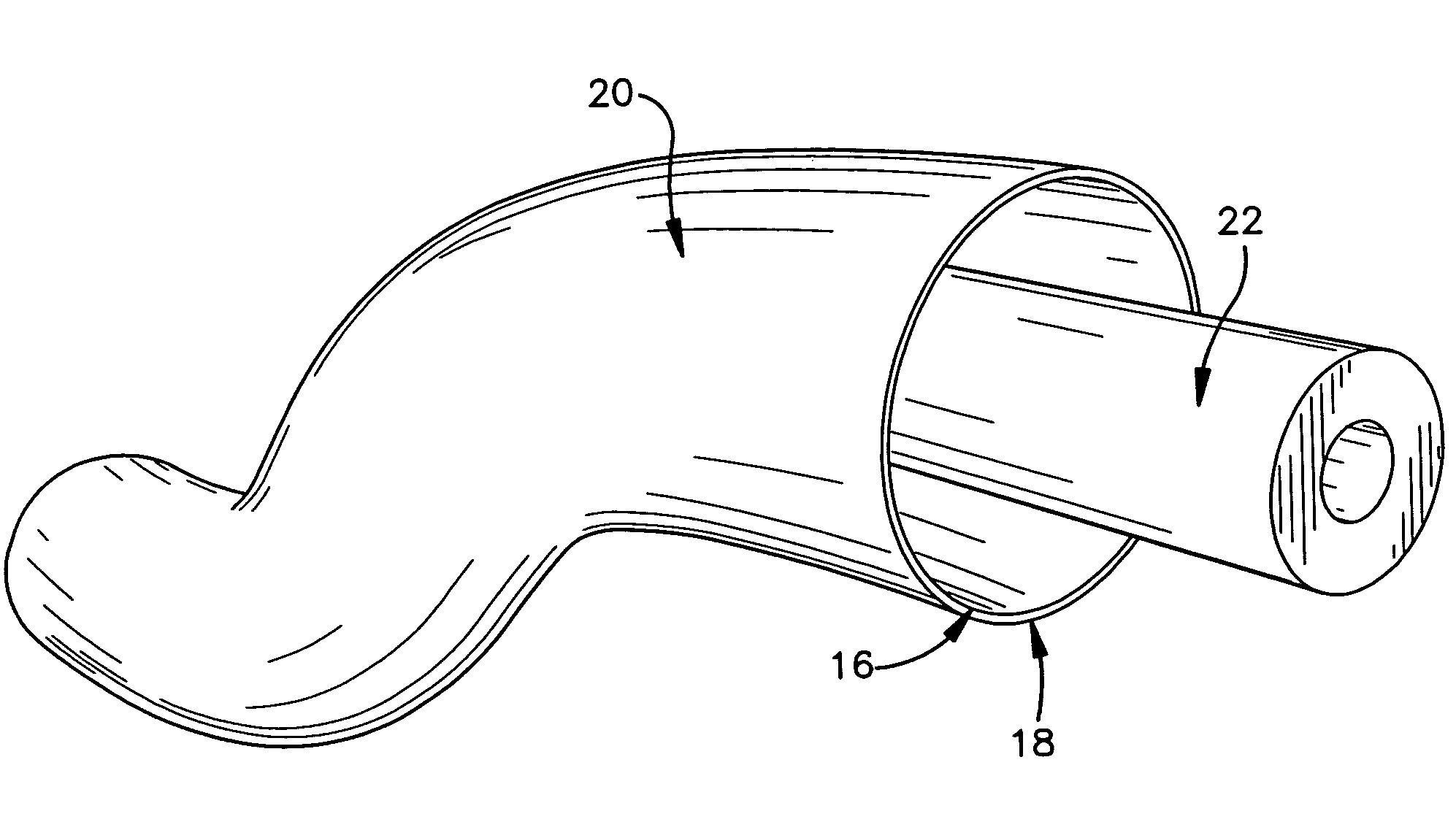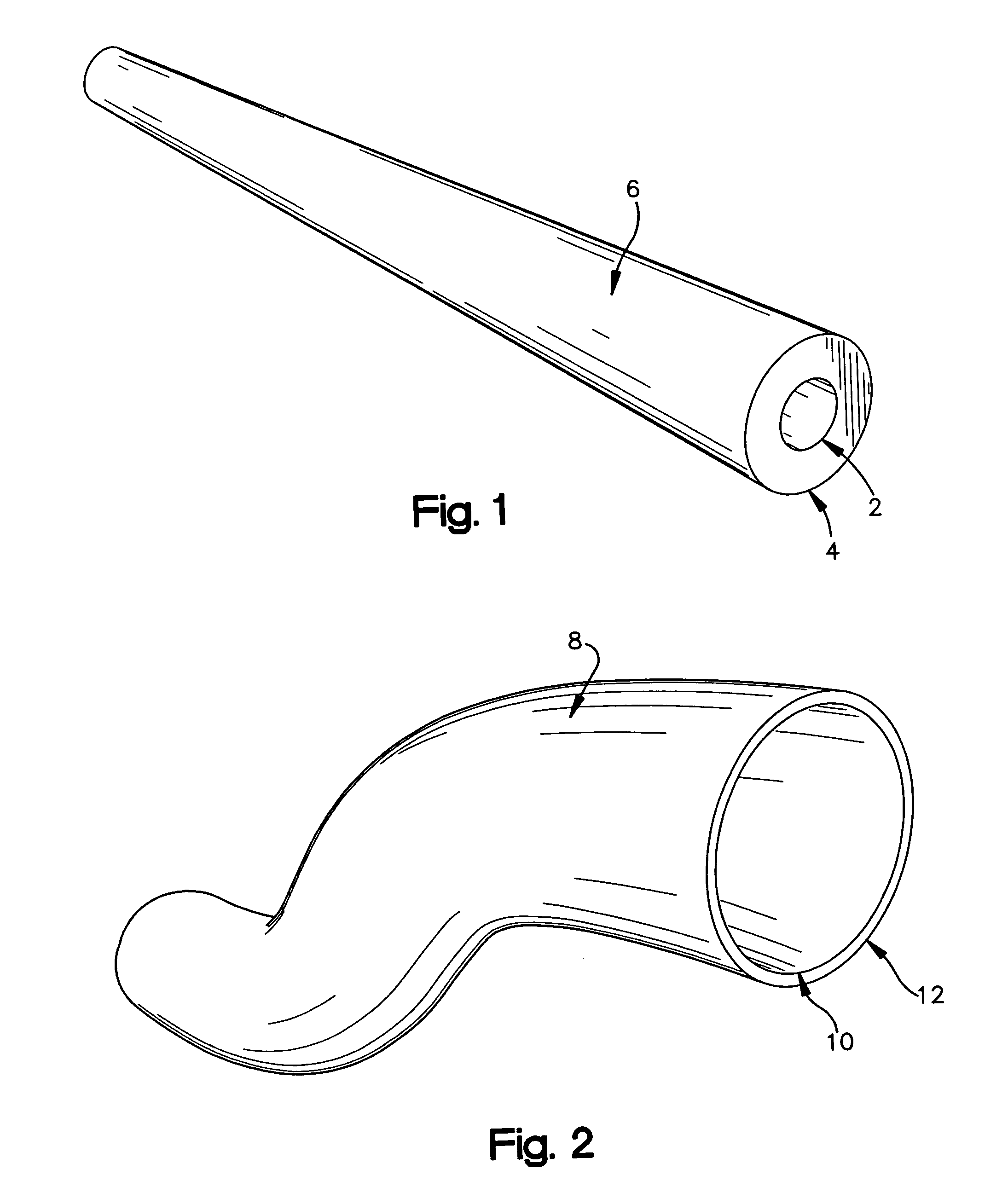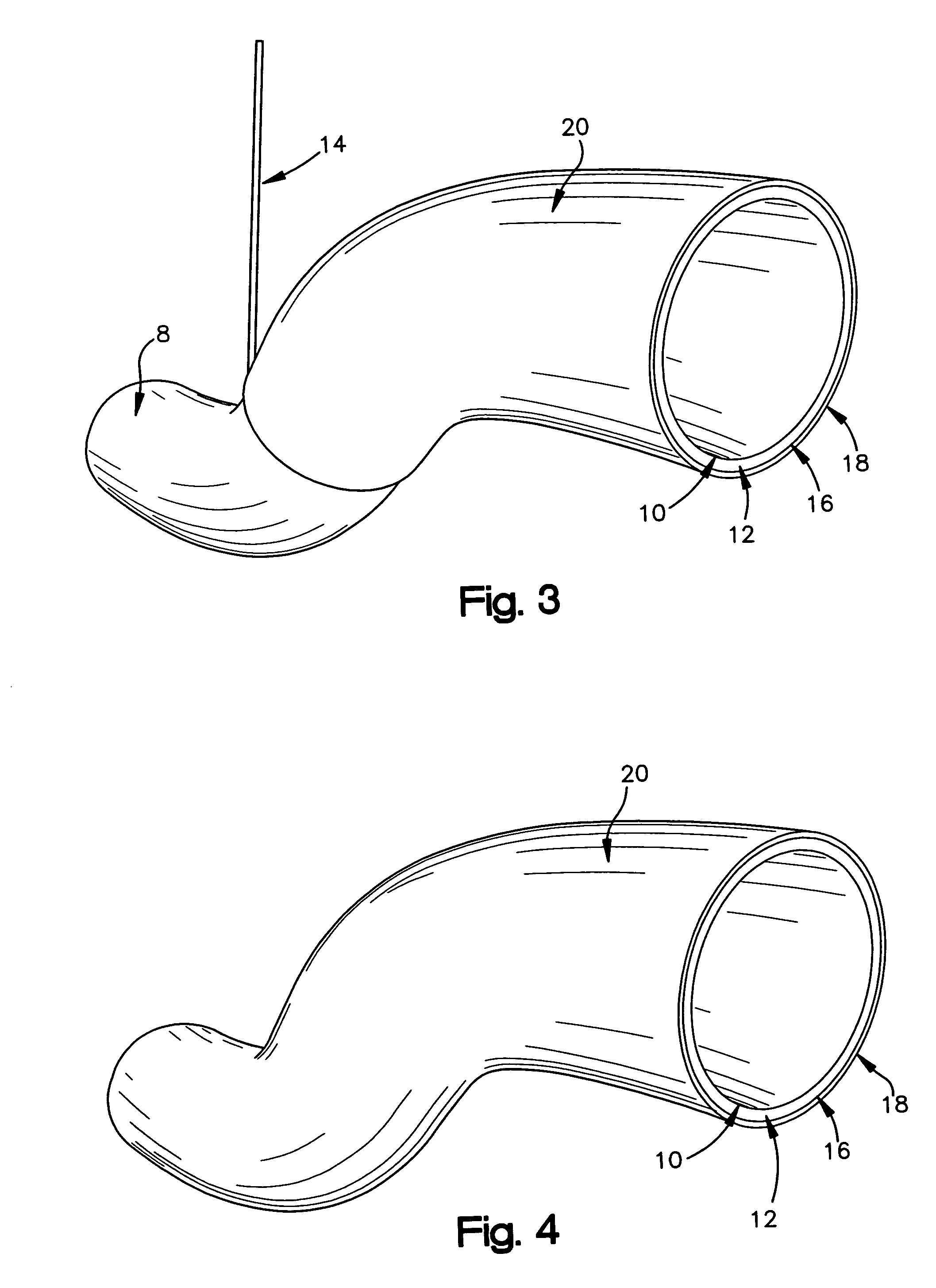Method of using a shape memory material as a mandrel for composite part manufacturing
- Summary
- Abstract
- Description
- Claims
- Application Information
AI Technical Summary
Benefits of technology
Problems solved by technology
Method used
Image
Examples
example 1
[0030]A polymeric reaction mixture was formulated by mixing vinyl neodecanoate (10%), divinyl benzene (0.8%), and styrene (85.2%) in random order to yield a clear solution. Benzoyl peroxide paste (4%) which is 50% benzoyl peroxide was then added to the resulting solution (all composition % are by weight). The resulting mixture is continually mixed at room temperature in a water or ice bath until a clear solution is achieved which can take 2 hours or longer depending on the amount of shape memory polymer resin needed. The resulting solution was kept cold in a refrigerator before use. To prepare the shape memory polymer (SMP) cylinder, the reaction mixture formulated above was placed in the hollow space between a plastic inner cylinder and an outer glass cylinder. The cylinders are separated at the bottom and top by a Viton® spacer. The Viton® spacer also acts as sealant in the mold. The sample is then heated in an oven maintained at atmospheric pressure and a temperature of 75° C. fo...
example 2
[0031]A polymeric reaction mixture was formulated by mixing vinyl neodecanoate (10%), divinyl benzene (0.8%), and styrene (55.2%) in random order to form a colorless solution. Polystyrene granules (30%) were then added to the resulting solution. The resulting mixture was then allowed to sit at room temperature with occasional stirring until all the polystyrene granules were dissolved to give a clear, viscous solution. Benzoyl peroxide paste (4%) which is 50% benzoyl peroxide, was then added to the resulting solution (all composition % are by weight). The resulting mixture is continually mixed at room temperature in a water or ice bath until a clear solution is achieved which can take 2 hours or longer depending on the amount of shape memory polymer resin needed. The resulting solution is kept cold in a refrigerator before use. To prepare the shape memory polymer (SMP) cylinder, the reaction mixture formulated above is placed in the hollow space between a plastic inner cylinder and a...
PUM
| Property | Measurement | Unit |
|---|---|---|
| Shape memory effect | aaaaa | aaaaa |
Abstract
Description
Claims
Application Information
 Login to View More
Login to View More - R&D
- Intellectual Property
- Life Sciences
- Materials
- Tech Scout
- Unparalleled Data Quality
- Higher Quality Content
- 60% Fewer Hallucinations
Browse by: Latest US Patents, China's latest patents, Technical Efficacy Thesaurus, Application Domain, Technology Topic, Popular Technical Reports.
© 2025 PatSnap. All rights reserved.Legal|Privacy policy|Modern Slavery Act Transparency Statement|Sitemap|About US| Contact US: help@patsnap.com



